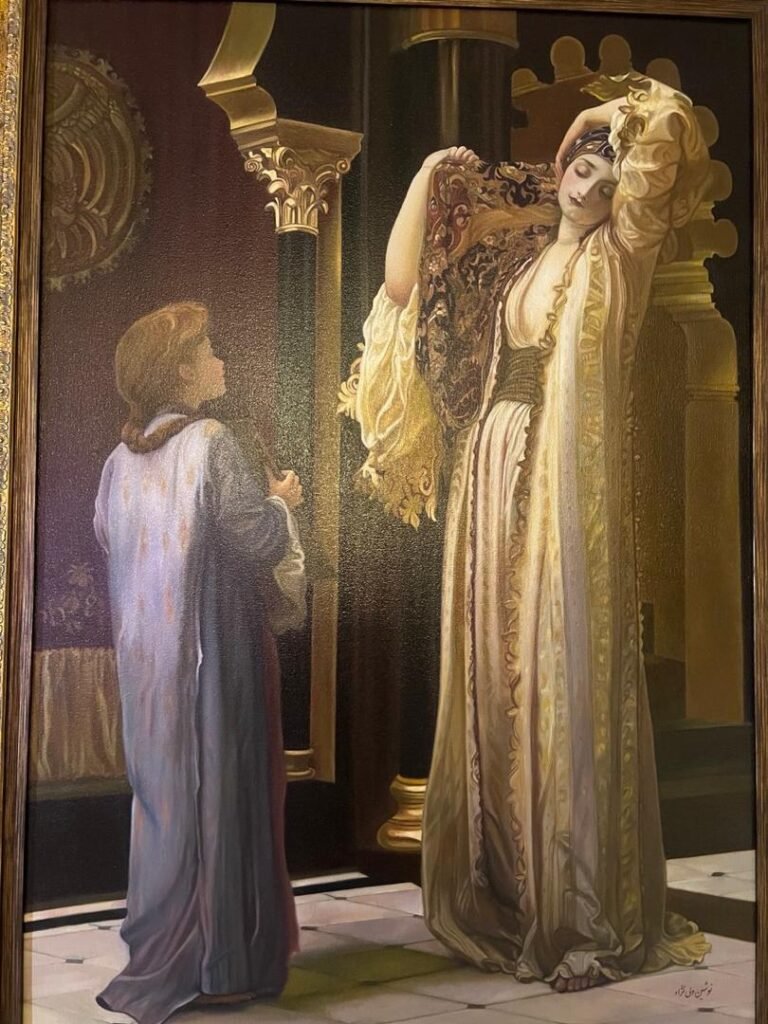“Light of the Harem” is a refined, Orientalist-inspired composition depicting an intimate interior scene where elegance, ritual, and admiration converge. The painting portrays a graceful woman preparing her attire, lifting a richly patterned shawl across her shoulders. Her figure is elongated and bathed in warm, luminous tones, suggesting both nobility and sacred serenity. Her garments—layered silks and embroidered gold fabrics—reflect a tradition of courtly refinement.
Before her stands a young attendant, whose posture expresses reverence and quiet anticipation. The attendant’s modest clothing, rendered in muted lavender and dusty blues, provides a visual and symbolic counterpoint to the opulent dress of the central figure. This dynamic suggests a hierarchy rooted in service and admiration, reinforcing the title’s evocation of an elevated feminine presence within the secluded world of the harem.
The architectural space around them is ornate and ceremonial, with gilded column capitals, marble flooring, and intricate decorative motifs. These structural elements frame the composition and lend the scene a sense of historical grandeur. Carefully controlled lighting highlights the woman’s gentle expression and the sumptuous textures of fabric, creating a soft radiance that echoes the work’s title.
Stylistically, the painting combines classical realism with elements of romantic Orientalism, emphasizing atmospheric richness, idealized beauty, and cultural imagination. The artist’s attention to detail—particularly in the drapery, textile designs, and subtle emotional gestures—suggests a narrative of quiet ritual, femininity, and the intimate splendor of palace life.
Overall, “Light of the Harem” evokes a world of refinement and introspection, where private moments of adornment become expressions of identity, dignity, and timeless cultural heritage.
